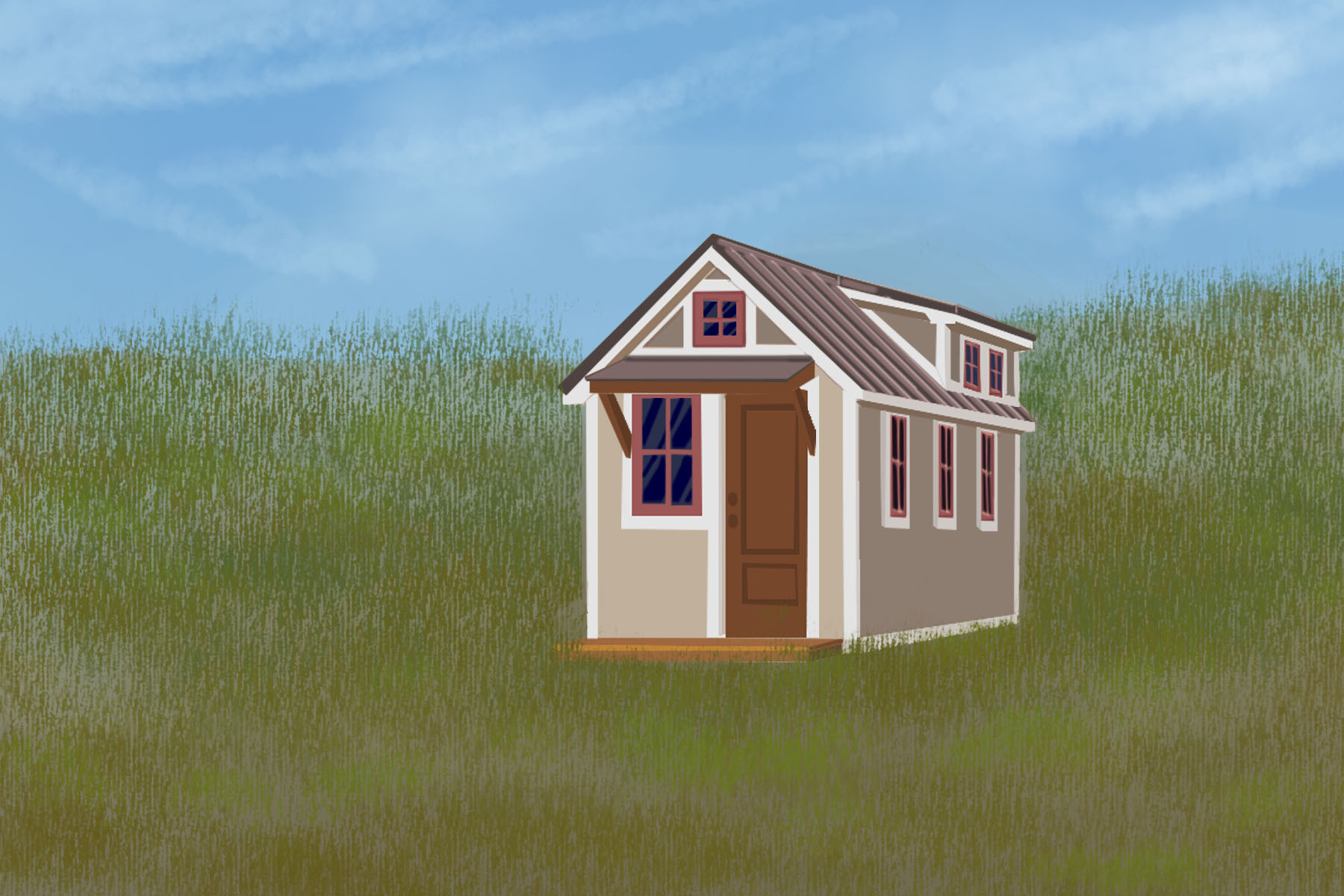Because COVID-19 has put the rest of their lives on hold, people are consuming more media than usual while cooped up. Since the beginning of quarantine, HGTV has become one of the most watched networks on television. The anxiety of the pandemic has increased the attraction to the comforting brand. As people are getting used to their alternative quarantine lifestyles, they are also learning about so-called “tiny lifestyles” from HGTV shows such as “Tiny House Hunters” and “Tiny House Big Living.”
These lifestyles are part of the growing trend of minimalism. The trend dictates that people focus their lives only on the things they value most by eliminating all distractions. An outgrowth of this minimalist philosophy is the “tiny house movement,” whose adherents opt to live in small, often mobile homes rather than larger, more expensive houses. Minimalism and tiny lifestyles are especially attractive today because they promise simplicity and clarity in a world that is growing in complexity.
Many proponents of the tiny lifestyle specifically, and of minimalism more generally, rave about their newfound freedom from life’s troubles. Some others, though, find that while the tiny lifestyle does free them from some problems, it also creates new ones.
So How Tiny Is a Tiny Lifestyle?
The typical tiny house is usually between 100 to 400 square feet. For reference, the average American home is about 2600 square feet. For most Americans then, opting to live in one of these tiny houses is a BIG change. But the tiny lifestyle is about more than just living in a small house. Without changing anything else, trying to squeeze the lives of most Americans into one of these houses is like trying to fit a square peg in a round hole. In order to downsize their houses, people first must downsize their lives. That’s where minimalism comes in.
Aspiring minimalists generally begin their journeys with a process of decluttering. They might go through their homes room by room, deciding which possessions to keep and which they can part with. Or they might take a hard look at their closets and pare clothing down to a few staple and versatile pieces. They could comb through their kitchens and simplify their diets so that they require less equipment. Sometimes, people even purge their social calendars of superfluous engagements.
Everyone’s journey into minimalism is a bit different, with some perhaps valuing certain possessions more than others do. However, the general logic behind their decisions always centers on the principle of focusing on what matters most and eliminating what matters least.
Obviously, these decisions are going to look different for different people — but if they’re doing it right, everyone will end up in the same place: with less stuff. Once their lives have been decluttered, they may choose to take the next step and move into a tiny house.
Why Live Little?
The current cost of living is only growing higher, and technology has allowed mass exposure to unprecedented amounts of information. Thus, people have become overwhelmed by the sheer quantity of things they need to worry about, and yearn for the freedom promised by simpler living. Advocates of the tiny lifestyle emphasize the financial freedom the tiny life has given them. They can now do things they couldn’t afford to do when saddled with the costs of living bigger.
Liberated from under a suffocating pile of things, they can instead invest in life-affirming experiences such as travel. Freed from chores and mortgages, they can spend more time getting to know their communities and themselves. The testimonies from satisfied people who have found freedom from “living littler” feel like a lifeline for those who want to escape their own messiness.
Problems with Tiny Homes
Even though the tiny lifestyle promises freedom and simplicity, many people who have embraced it must contend with the extra complications tiny houses create.
To name a few:
— Since tiny houses are so small, a mess that might be confined to one room of a larger house can easily spread to the entire tiny house quickly. Many tiny house owners complain that they feel they are “constantly cleaning.”
— In such small spaces, smells are stronger, last longer and cling to all the items in the house.
— Tiny homeowners have to think about the weight of everything they bring into their houses, which can only hold so many pounds.
— Utility problems are potentially more stressful and more devastating in smaller spaces.
— Zoning laws often make it difficult to find land on which to park the tiny house
— Many tiny house residents report that close quarters can strain their relationships as they search in vain for “me time.”
Far from clearing away life’s complications and messes, the tiny lifestyle seems to just replace them with new ones. When trying to decide if the tiny lifestyle is for them, people need to consider if they have the capacity to take on these extra concerns and stresses.
So What Is the Value of a Tiny Lifestyle?
People overwhelmed by the messiness of life are attracted to solutions that promise simplicity. As people make their way through overflowing schedules, phones that explode with notifications and paying to live in expensive homes that they share with piles of clutter, they pine for the clean, immaculately designed tiny houses they see on HGTV. They long for the uncomplicated and enlightened lives described by tiny house advocates.
But the messiness they want to eliminate is neither a feature of the times, nor of a specific lifestyle. Messiness is an inevitable part of life itself. The tiny house owner can be just as overwhelmed by their own challenges as the everyday person is by the demands of a bigger lifestyle.
Images on a screen and isolated stories about life are always and necessarily simplified versions of what they portray. Inevitably, living tiny is going to be just as messy as living bigger, and perhaps in the sense of physical mess, actually quite a bit messier. This isn’t to say that there is no value in the tiny lifestyle. Many people do find greater happiness and freedom living this way.
But perhaps the value of the tiny life isn’t that it’s simpler than real life. The tiny lifestyle doesn’t get rid of the mess, it just exchanges it for a different kind. But for some people, the value of living little is that they can choose which kind of mess they are better suited to deal with.

















